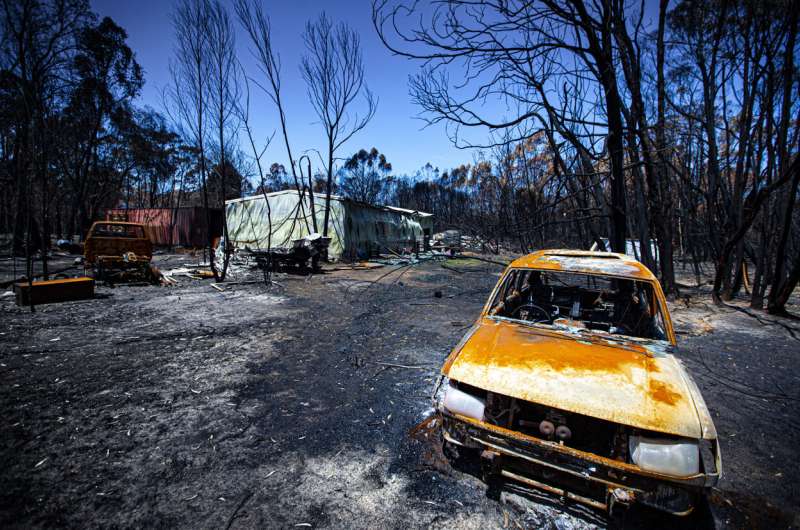Burnt out cars and sheds on a property in New South Wales, Australia after the 'Black Summer' bushfires in 2019-2020. Credit: Paul Jones, University of Wollongong
In 2019–2020, wild Australian bushfires ravaged millions of hectares, claimed 33 lives and destroyed 3,113 houses, leaving most of Australia traumatized amid the ashes. But as a recent study by researchers from the University of Wollongong points out, adequate planning could save people's lives and better protect their homes.
The research published in the scientific journal Fire focused on two powerful wildfires—Linksview and Mt York—that destroyed 200 houses in the Blue Mountains area of New South Wales in October 2013. Until 2019, these had been the most impactful bushfires that happened in NSW.
The scientists thoroughly analyzed 85 risk factors that influenced the impact of fire on the property. The most important factors (on top of weather and topography) were whether the house was defended against the fire and its proximity to the nearest forest and the nearest burnt house.
Professor Owen Price, the director of Centre for Environmental Risk Management of Bushfire, is lead author of the research paper.
"As every year wildfires continue to destroy buildings in fire-prone regions in Australia, we're revealing the best methods of preventing damage," Professor Price said.
"We found that the worst-placed houses are western-facing, without defensible space (where landscaping, plants or other things that fuel fires are set away from the building) and have other burnt houses nearby. These properties are 10 times more likely to be impacted in a fire."
"Additionally, plants growing over the house and the presence of lawns and artificial fuels such as fences can influence a house destruction."
Professor Price highlighted that adequate preparation and making a smart bushfire plan ahead of the summer are crucial for people living in fire-prone areas.
"Our study reinforces the message from the Rural Fire Service that it is really helpful to get your property ready for the fire season. That means maintaining low-fuel loads in the garden and trying to separate your house from the forest, where possible and practical."
More information: Owen F. Price et al, Comprehensive Examination of the Determinants of Damage to Houses in Two Wildfires in Eastern Australia in 2013, Fire (2021). DOI: 10.3390/fire4030044
Provided by University of Wollongong
























